Severe pathology Cerebral palsy occurs in children but does not go away with growing up. There are many reasons for its occurrence, on which the prognosis of cure depends.
Record content:
- 1 General characteristics of the disease
-
2 Reasons for the development of cerebral palsy
- 2.1 During pregnancy
- 2.2 During childbirth
- 2.3 After the birth of a child
- 3 Types of cerebral palsy and manifestation
- 4 Diagnosis of cerebral palsy
- 5 Differential diagnosis
-
6 Treatment methods
- 6.1 Drug therapy
- 6.2 Physiotherapy, exercise therapy and massage
- 6.3 Special techniques
- 6.4 Orthopedic treatment
- 6.5 Methods of social and educational rehabilitation
- 6.6 Surgical intervention
- 7 Complications and consequences of cerebral palsy
- 8 Video about cerebral palsy
General characteristics of the disease
Cerebral palsy or infantile cerebral palsy is a collective syndrome that denotes a group of motor (neuromuscular) disorders in a child and has several forms of manifestation. The most common manifestations of the disease are: paresis, inability to perform any movements, problems with eating and speaking.
Most often, cerebral palsy is detected before the age of 2 years, and the symptoms of pathology can appear as early as the first day after the birth of the child. Since the number of affected brain cells does not increase (they are limited to one area), the disease does not progress with age.
Reasons for the development of cerebral palsy
The cause of cerebral palsy in children is damage to the cells of the cerebral cortex under the influence of certain factors.

They can act during pregnancy, during childbirth, or after the birth of the child.
During pregnancy
The causes of cerebral palsy during pregnancy are:
- Infectious diseases - any infections (viral, bacterial, fungal) can cause impaired intrauterine development of the fetus. Neuroinfections are especially dangerous, since their pathogens are localized in areas of the central nervous system.
- Genetic mutations - in certain cases, developmental disorders are caused by a genetic failure in the formation of the fetus.
- Fetal hypoxia - as a result of a lack of oxygen in the body, the functions of the nervous system are suppressed.
- Toxic effects. Tobacco, alcohol, drugs and some drugs have a toxic effect on the fetus and often cause abnormalities in pregnancy. Toxic factors also include the effect on a woman even before pregnancy of radioactive and chemical substances (for example, when working in a workplace).
- Physical impact. The risk of cerebral palsy increases if, during pregnancy, a woman and a fetus were exposed to X-rays and electromagnetic rays, radiation.
- Multiple pregnancy. Due to a lack of space in the womb and more difficult conditions of gestation, multiple pregnancies often end in cerebral palsy in one or more children.
- The threat of termination of pregnancy. If during the period of gestation there was a premature placental abruption, serious illness and injury to the mother, then the risk of cerebral palsy in the child increases several times.
- Some diseases of the mother. Diseases of the cardiovascular and endocrine systems increase the risk of having a child with cerebral palsy several times. It is also influenced by blood diseases (especially blood clotting disorders).
The living environment of the expectant mother is also important - for a favorable course of pregnancy and health. the child is influenced by the socio-economic and living conditions, the quality of medical services provided and the environmental situation.
During childbirth
Birth trauma is one of the main reasons leading to cerebral palsy. It can be caused by the use of forceps, a vacuum extractor, or the wrong technique of removing the baby from the birth canal.
Other generic causes of cerebral palsy are:
- Narrow mother's pelvis. It sharply complicates the passage of the fetus through the birth canal.
- The entry of amniotic fluid into the lungs. This provokes suffocation.
- Rapid labor and too active labor activity. Too quick childbirth is a threat to the health of the baby, since too frequent contractions lead to impaired blood circulation in the placenta and cause hypoxia; too fast movement of the fetus through the birth canal can lead to injury and disruption of the nervous system.
- Prolonged labor and uncoordinated labor. With too sluggish and prolonged childbirth, the blood supply to the placenta is disrupted and fetal hypoxia occurs.
After the birth of a child
A number of cases of cerebral palsy are formed after the birth of a child as a result of any illness or injury.
Pathology can lead to:
- severe jaundice;
- hemolytic disease leading to jaundice;
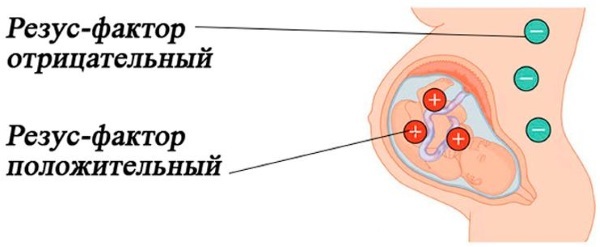
- head and neck injuries;
- infectious diseases;
- congenital pathologies of the respiratory and nervous systems.
Types of cerebral palsy and manifestation
There are 6 forms of cerebral palsy:
-
Spastic diplegia - the most common type of pathology, expressed in impaired functioning of the limbs. There is also a delay in the development of the speech apparatus and a slight decrease in intelligence.
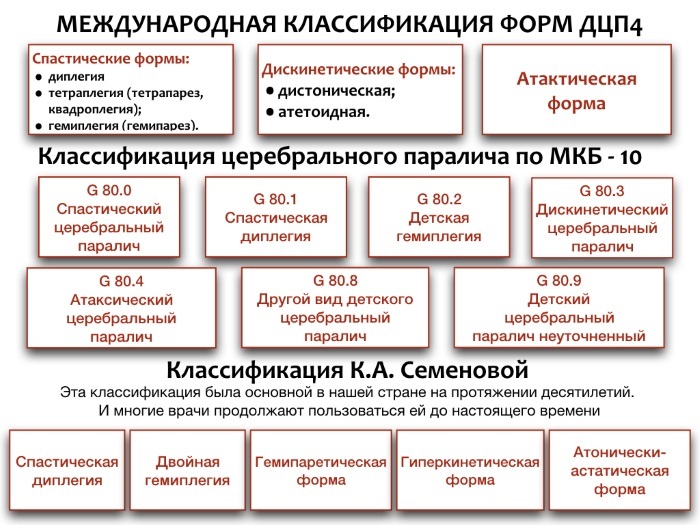
- Hemiplegic form - characterized by paralysis of one side of the body, while the upper limb is affected more than the lower. This form of pathology has the most favorable outcome and, provided that therapy is started early, it can be achieved that the child will walk independently in the future.
- Dyskinetic (hyperkinetic) - the child has involuntary muscle movements and increased muscle tone (often together with paralysis and paresis). Also, in many cases, hearing impairment and swallowing functions develop. Decreased intelligence is very rare. The hyperkinetic form of the disease also has a favorable outcome.
- Ataxic (atonic-astatic) - characterized by impaired coordination of the child's body in combination with low muscle tone. With this form of pathology, hearing impairment is often diagnosed.
-
Double hemiplegia (tetraparesis, spastic tetraplegia) - the most severe form of pathology, characterized by damage to all limbs (often in the form of paresis). Microcephaly, visual and hearing impairments, and intellectual retardation are also common. In almost all cases, children with this form of the disease cannot even hold their heads on their own, chew and swallow food.
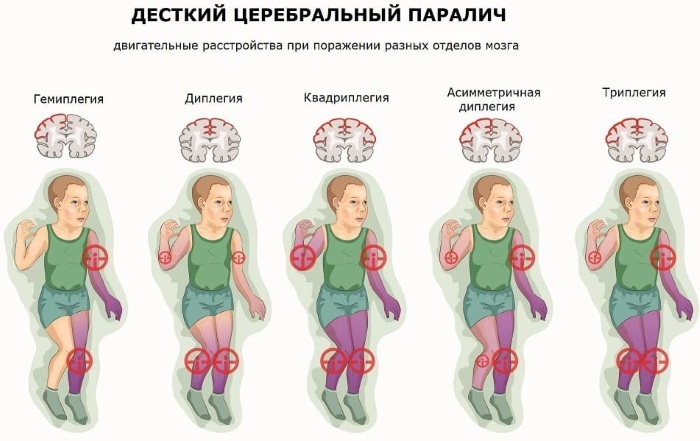
- Mixed form - there are signs of 2 or more types of cerebral palsy. Most often, spastic diplegia occurs in combination with dyskinetic form or hemiplegia.
Diagnosis of cerebral palsy
Cerebral palsy (the causes of occurrence in children are different and can act at different periods) is not inherited, but in certain cases is the result of genetic disorders.
In medicine, there are no specific methods for diagnosing cerebral palsy. Several factors and signs typical of the disease may indicate it: a low Apgar score, visible muscle abnormalities tone (newborn is too sluggish), child's lag in psychophysical development (mismatch of skills for a specific age baby).
If you suspect cerebral palsy, the child should be examined by a neurologist. He collects anamnesis, including data on the course of pregnancy, childbirth, the presence of diseases and injuries in the mother during pregnancy, the presence of congenital abnormalities and injuries in the child.
The baby is then examined for abnormal muscle tone (children under 6 months of age often have increased muscle tone). non-pathological tone) draws attention to the child's response to light and sound and other skills in accordance with age.
Additionally, laboratory and instrumental diagnostic methods are prescribed. They are necessary to determine the causes of cerebral palsy. Laboratory tests are needed to detect infections.
The following are used as instrumental methods:
- Brain ultrasound - allows you to examine the structure of the organ and identify some pathologies (cysts, tumors).
- MRI of the brain - a more detailed examination method that allows diagnosing serious organic changes in the structure of an organ (foci of hemorrhage, cortical-subcortical atrophy).
- Electroencephalography - during the procedure, the bioelectric potentials coming from the brain are recorded. This method allows you to identify violations of the work of different areas of the organ.
-
Electromyography and electroneurography - using these methods, it is possible to determine the bioelectric activity of muscle structures and the rate of transmission of nerve impulses along them.
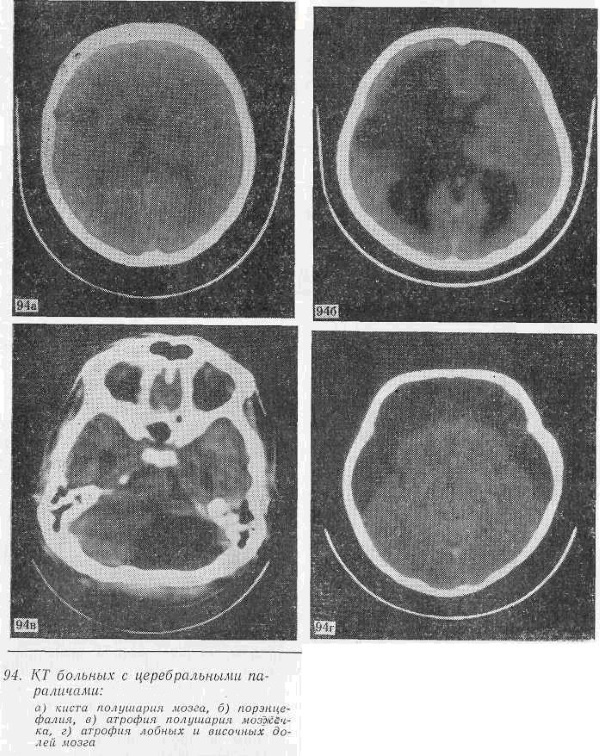
Additionally, consultations of pediatric specialists may be required: an ophthalmologist, audiologist, orthopedist, psychiatrist. In the presence of seizures, an appointment with an epileptologist is required.
Differential diagnosis
Cerebral palsy (the causes of occurrence in children also depend on the lifestyle of the expectant mother) must be distinguished from other diseases with similar symptoms. For this, various genetic studies and biochemical analyzes are used, as well as the methods of instrumental diagnostics, which are listed above.
List of pathologies symptomatically similar to cerebral palsy:
- hereditary spastic paraplegia and ataxia;
- autism;
- spinal cord lesions;
- spinal atrophy;
- Strumpel's disease or Phar's disease;
- Sjogren-Larsson syndrome or Giacomini syndrome.
Treatment methods
Cerebral palsy (the causes of occurrence in children affect the form of the disease) cannot be completely cured, since the pathology is a consequence of brain damage.
However, with timely initiation of therapy, it is possible to achieve a significant improvement in the condition of the child and the fact that the child in the future will be able to walk independently, provide for himself and will normally adapt in a social environment. The success of treatment also depends on the form of cerebral palsy.
Drug therapy
Drug therapy is prescribed not to treat the disease, but to eliminate its symptoms and alleviate the child's condition. If cerebral palsy is combined with epileptic seizures and seizures, then anticonvulsants and anticonvulsants are prescribed.
In case of muscle tone disorders, either antispastic drugs or muscle relaxants (reduce muscle tone) are prescribed, or drugs that increase muscle tone. Also, drug therapy may include nootropics, vascular drugs, vitamin complexes.
Physiotherapy, exercise therapy and massage
These techniques are most often used together, since they complement each other and, in combination, increase the effect of treatment and rehabilitation.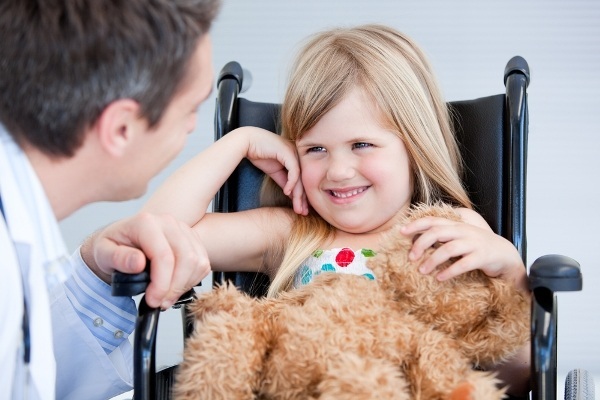
As a physiotherapeutic effect in cerebral palsy, the most effective procedures are oxygen barotherapy, electromyostimulation, electrophoresis with the introduction of drugs.
Water procedures are also used: therapeutic baths with the addition of phytopreparations, oxygen, turpentine and other substances. Physiotherapy helps to reduce or increase muscle tone (depending on the symptoms and type of treatment), reduce the severity of paresis.
Therapeutic exercise helps to increase the performance of muscles, their relaxation. Exercise also activates the metabolism in the tissues of the body.
With cerebral palsy, therapeutic gymnastics is carried out by a special doctor at home or in stationary conditions, however, parents can learn the technique of therapeutic gymnastics and independently engage with the child at home. As a therapeutic gymnastics, swimming is additionally used, which has a beneficial effect on the muscles, strengthening them and relieving tension.
Massage is part of the therapy for cerebral palsy. With it, you can act on the affected muscles and remove or increase their tone, activate blood circulation and metabolism in body tissues, and eliminate some of the symptoms of pathology.
The massage should be carried out by a pediatric massage therapist, but parents can independently massage the child by stroking, gently rubbing the limbs and patting.
Physiotherapy, exercise therapy and massage should be carried out in courses 2-3 times a year for 10-20 procedures. The regularity of treatment affects the success of the rehabilitation of a child with cerebral palsy.
Special techniques
For the correction of cerebral palsy and other movement disorders, special therapeutic techniques have been developed, which are aimed at restoring normal mobility of joints and muscles, adapting the body to load.
| Method | Description |
| Voight's method | During the procedure, the instructor presses on special points on the patient's body when he is in a certain position. This helps to activate the work of the muscles involved in making any movement. This method is most effective in children under 1 year of age.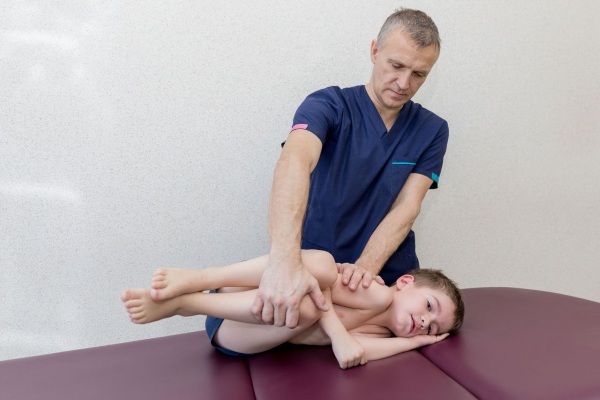
|
| Bobath therapy | The method of treatment is aimed at suppressing the adoption of unnatural postures, facilitating natural movements and maintaining physiological postures. Also, the technique stimulates the enhancement of the sensation of one's own body in space. |
| Method of "Dynamic propriocetive correction" | Includes several techniques. They are based on the use of special medical suits and simulators that help the patient to master the correct technique for performing various movements and reduce the severity of paresis and paralysis. For treatment with this method, the following are used:
|
| Mechanotherapy | For mechanotherapy, special devices are used based on the principle of feedback. On active simulators, the patient moves at the expense of his own applied efforts; on passive simulators, movements are performed with the help of motor devices that lighten the load. |
Orthopedic treatment
Almost all children with paralysis require special assistive devices during or after therapy.
Depending on the symptomatology, the type of pathology, the degree of movement disorders, the following are used:
- walker - designed for children who can walk, but cannot maintain balance;
- wheelchairs - designed for children who cannot walk on their own;
-
verticalizers - help the child to maintain an upright position without assistance.
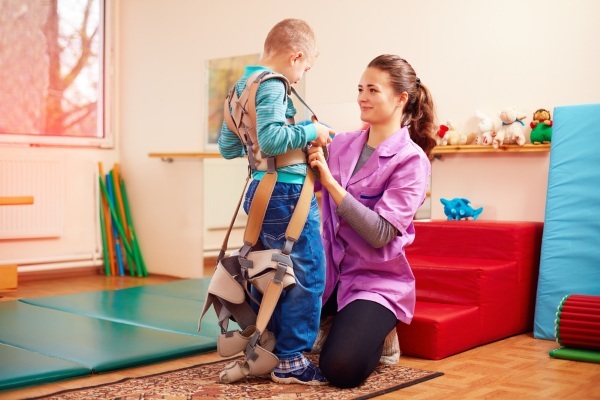
There are also various seat-chairs designed for going to the toilet (equipped with a special sanitary device and clamps; allow not to carry the child from the room to the bathroom) and for the bath.
If the child has unnatural postures and positions, then this is corrected by giving the body parts correct position and fixing it with special tires, rollers, bandages and other devices.
Methods of social and educational rehabilitation
Social pedagogical therapy is very important in cerebral palsy, as it helps to establish social skills child, develop basic skills (dress, use a spoon, carry out hygienic procedures).
Classes with a speech therapist are aimed at eliminating speech defects and problems with chewing and swallowing food.
Classes with a psychologist help to expand cognitive abilities, give the child the opportunity to communicate normally with other people. During the sessions, various methods of interaction are used: art therapy, sound therapy, fairy-tale therapy. Mastering elementary skills takes place in a playful way.
Recently, animal-assisted therapy is gaining popularity - treatment through the interaction of a child and an animal. Horses and dolphins are more commonly used for therapy. The interaction between the patient and the animal takes place under the supervision of an instructor and a psychotherapist - during the procedure, it is established favorable emotional atmosphere, stimulation of brain neurons through tactility, improvement of speech and motor skills.
Surgical intervention
The main indication for the operation is the formation of persistent contractures or the ineffectiveness of other methods of therapy.
Depending on the form and manifestation of the disease, they can carry out:
- tendon or tendon-muscle plastics;
- osteotomy (lengthening or shortening of bones);
- spinal rhizotomy (with severe pain);
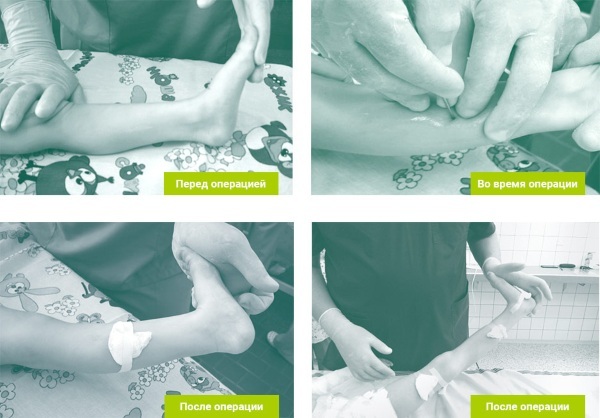
- Ulzibat method - dissection of muscles affected by contractures.
Complications and consequences of cerebral palsy
Cerebral palsy (the causes of occurrence in children can be prevented by observing prevention) is not a progressive pathology.
However, against the background of movement disorders, secondary pathologies develop, sometimes dangerous to human health and life:
- developmental delay (mental and physical);
- posture disorders and diseases of the spine;
- gait disturbances;
- joint diseases;
- difficulty eating, drooling;
- epilepsy;
- sensitivity disorders;
- violations of the organs of urination and defecation.
The psychological consequences of infantile cerebral palsy should be separately taken into account. Due to developmental abnormalities, a child with this disease often has complexes, does not communicate well with other people and children, and is not social. In adulthood, depression is possible against the background of self-rejection. Therefore, the therapy of cerebral palsy must necessarily include conversations with a psychologist and psychotherapist.
Cerebral palsy often leads to disability of the child. The disability group is determined depending on the degree of damage to the body and the type of disease.
Although a child's cerebral palsy cannot be cured, with the help of complex treatment it is possible to ensure that in the future he will be able to lead a normal life. However, the success of treatment is influenced by the causes and form of the disease.
Video about cerebral palsy
Cerebral palsy - causes, diagnosis and treatment:



